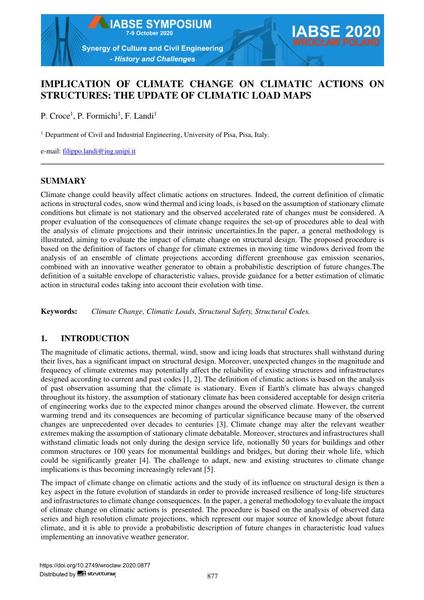Implication of Climate Change on Climatic Actions on Structures: the Update of Climatic Load Maps

|
|
|||||||||||
Détails bibliographiques
| Auteur(s): |
P. Croce
P. Formichi F. Landi |
||||
|---|---|---|---|---|---|
| Médium: | papier de conférence | ||||
| Langue(s): | anglais | ||||
| Conférence: | IABSE Symposium: Synergy of Culture and Civil Engineering – History and Challenges, Wrocław, Poland, 7-9 October 2020 | ||||
| Publié dans: | IABSE Symposium Wroclaw 2020 | ||||
|
|||||
| Page(s): | 877-884 | ||||
| Nombre total de pages (du PDF): | 8 | ||||
| Année: | 2020 | ||||
| DOI: | 10.2749/wroclaw.2020.0877 | ||||
| Abstrait: |
Climate change could heavily affect climatic actions on structures. Indeed, the current definition of climatic actions in structural codes, snow wind thermal and icing loads, is based on the assumption of stationary climate conditions but climate is not stationary and the observed accelerated rate of changes must be considered. A proper evaluation of the consequences of climate change requires the set-up of procedures able to deal with the analysis of climate projections and their intrinsic uncertainties.In the paper, a general methodology is illustrated, aiming to evaluate the impact of climate change on structural design. The proposed procedure is based on the definition of factors of change for climate extremes in moving time windows derived from the analysis of an ensemble of climate projections according different greenhouse gas emission scenarios, combined with an innovative weather generator to obtain a probabilistic description of future changes.The definition of a suitable envelope of characteristic values, provide guidance for a better estimation of climatic action in structural codes taking into account their evolution with time. |
||||
